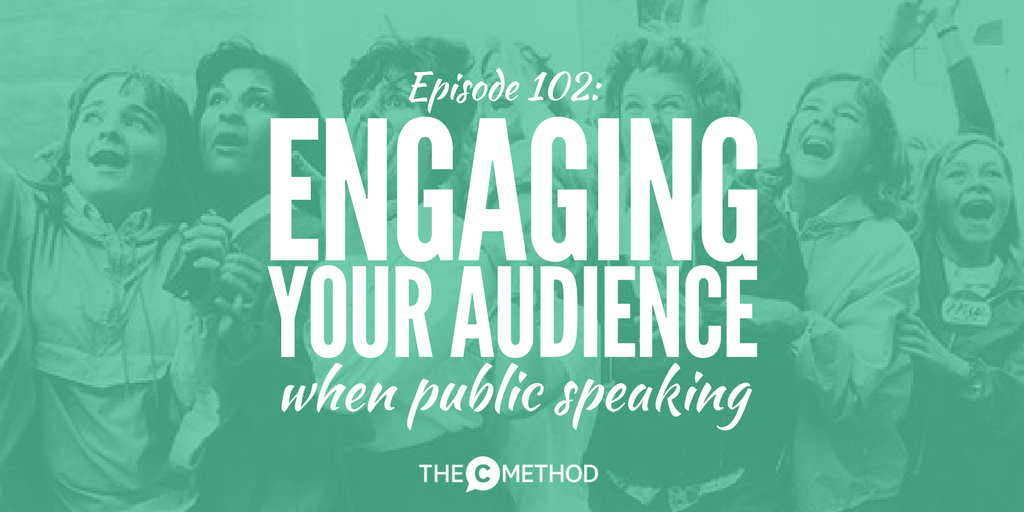“How do I keep my audience interested and engaged?”
I get this question all the time. Yes, you can have a great presentation written out. Yes, you can have practiced it over and over again until it’s perfect. But what about that last piece of the public speaking puzzle: audience engagement?
If the audience isn’t engaged, they will be less likely to take in your message. Which means it’s a waste of their time being there, and YOUR time delivering it.
Have you ever experienced this before?
You get up to speak to a group – maybe you’re running a team meeting, presenting to a client or pitching a new idea to the executive board – and you start to get the feeling that your audience is…well, losing interest.
Maybe they start looking at their phone, or doodling in their notepad. Or worse, they start fidgeting, yawning, or perhaps even whispering to the person next to them!
You start to panic, thinking: ‘Oh no, they’re getting bored! I’m losing them!’ So, feeling slightly flustered, you start to speed up, hoping that if you finish the presentation faster, they won’t be as bored and you can get out of there sooner. But it doesn’t seem to work. In fact, your audience starts to lose even more interest because they can’t keep up with what you’re saying!
Luckily, communication is always a two way street. Yes, you can tell when people are disengaged, but it means you then have the power to re-engage them. And when that happens, you’ll know. You’ll have their full attention, they’ll be making eye contact, nodding along, smiling, raising their hands when you ask, etc.
Psst: By the way, my brand new course ‘Overcome Public Speaking Anxiety’ is nearly here! Click here to register early and get 50% off. Boom!
How to increase audience engagement
1. Be aware of and involve the whole space
Don’t pretend you’re in a 2 x 2 foot invisible box. Look out to the back of the room, move around, TAKE UP SPACE. This will INVOLVE the audience through your non verbal communication.
2. Be a strong leader
You’re the one running the show here. People WILL follow you if you LEAD. If you don’t feel like a strong leader, then ACT the part of one. Fake it until you make it!
3. Start early
If you do a monologue and then 15 minutes into your presentation you try to engage them, they’ll be taken by surprise. Instead, get them engaged as early as possible to ‘educate’ them that this is a presentation where they HAVE to participate!
4. Make it about THEM, not you
Most people get up and talk about themselves: “Hi I’m talking about ____ and I’ve done ____ and I think this is ____ .” Instead, ask the audience: “Who is here to do ___ ?” “The results you’ll get from today are ____ .”
5. Get the audience moving
When we are stagnant, we have less oxygen flowing through the body. This leads to a lack of energy and concentration. If your audience has been sitting for a while, get them to applaud, stand up, and raise their hands (maybe not all at the same time!) to keep them energised and awake.
6. Lead by example
No one’s going to raise their hand if you don’t show them how to do it (and with enthusiasm too). When I’m presenting, I think of myself as a super-hyper aerobics instructor whose job it is to get the audience to 100% energy level. But to do that, I need to be at 150%. Don’t worry if you feel silly!
7. Get them talking — to each other
You don’t have to be the only one speaking during your presentation. Encourage your audience to share something they’ve learned or what they want to learn with the person next to them. Then, get some volunteers to share what their partner just said. They’ll be more likely to oblige, rather than talking about themselves!
This Episode was Part 4 in the Public Speaking Mini Course. For the rest of the course, find Part 1 here, Part 2 here and Part 3 here.

Leave a Reply